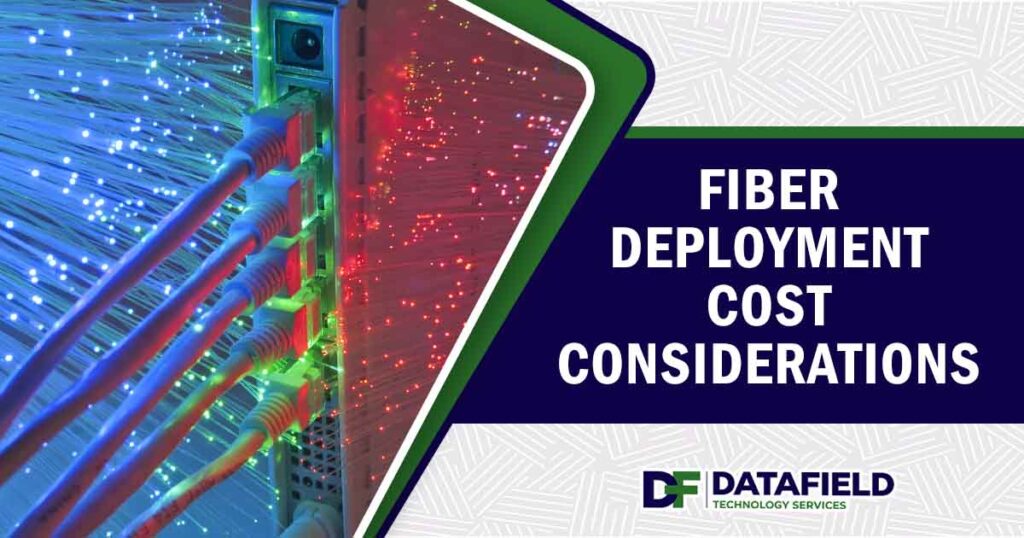The Importance of Fiber Network Deployment
Fiber-optic networks are essential for high-speed data transmission, supporting telecommunications, enterprise IT, and broadband expansion. As demand for reliable connectivity grows, businesses and service providers must assess the cost of fiber deployment. Understanding the factors that influence fiber deployment cost helps in budgeting, decision-making, and optimizing investments in fiber infrastructure.
Key Factors Influencing Fiber Deployment Cost
1. Network Design and Planning
Network design is a primary factor in fiber deployment cost. Engineers must determine the optimal route based on distance, terrain, and urban density. Deploying fiber in rural areas typically incurs higher costs due to longer cable runs and limited existing infrastructure.
Permitting requirements also impact cost. Telecom providers and contractors must obtain approvals from local, state, and federal agencies. The cost of permits varies by location and may include application fees, environmental assessments, and compliance with zoning regulations.
Proper planning reduces costs by identifying efficient pathways and minimizing disruptions to existing utilities. Network design should also account for scalability to accommodate future bandwidth needs.
2. Infrastructure and Equipment Costs
The materials and equipment required for installation significantly impact fiber deployment costs. The primary components include fiber-optic cables, conduits, and enclosures. Costs vary based on cable type, such as single-mode or multi-mode fiber, and whether the deployment is aerial or underground.
Additional infrastructure, such as splice enclosures, distribution panels, and fiber termination equipment, adds to the cost. The installation also requires specialized tools, including fusion splicers, optical time-domain reflectometers (OTDRs), and trenching machinery for underground deployments.
Equipment costs fluctuate depending on project scale, terrain conditions, and the need for protective enclosures to shield fiber from environmental damage. Businesses must evaluate cost-efficient sourcing strategies to optimize their investment in fiber network deployment.
3. Labor and Installation Expenses
Labor costs represent a significant portion of fiber deployment costs. Skilled technicians are required for fiber splicing, cable installation, and network testing. The installation’s complexity varies based on terrain, existing infrastructure, and local labor rates.
Aerial fiber installation, which involves attaching cables to utility poles, is often more cost-effective than underground deployment. However, coordination with utility companies may require additional leasing fees. Though more expensive due to excavation and trenching, the underground installation provides better protection against environmental hazards and reduces long-term maintenance costs.
The duration of installation also affects labor expenses. Deploying fiber in urban areas may require additional planning to avoid disrupting traffic and underground utilities, increasing labor costs. Efficient workforce management and automation technologies can reduce expenses.
4. Right-of-Way and Permitting Fees
Right-of-way costs are a significant factor in fiber deployment costs. Telecom providers must obtain permission to install fiber on public or private land. This may involve lease agreements, government permits, or fees for access to roadways, railways, and utility corridors.
Permit fees vary based on jurisdiction and project scope. Some municipalities require environmental impact assessments, increasing costs and deployment time. Additionally, coordination with multiple agencies can lead to administrative delays, further influencing overall project expenses.
Businesses should assess regulatory requirements early in planning to avoid unexpected costs and delays. Working with experienced consultants or legal advisors can help navigate complex permitting processes efficiently.
5. Maintenance and Long-Term Costs
Beyond initial deployment, businesses must account for maintenance and operational expenses. Fiber networks require periodic inspections, testing, and repairs to maintain performance. Unexpected damages from construction, weather events, or vandalism can increase long-term costs.
Regular maintenance includes fiber splicing repairs, signal testing, and equipment upgrades. Deploying a network with future scalability in mind helps reduce the need for costly modifications. Investing in high-quality materials and proper installation techniques can minimize long-term maintenance costs and improve the network’s reliability.
How to Optimize Fiber Deployment Costs
1. Strategic Network Planning
Careful planning is essential for managing fiber deployment costs. Businesses can reduce expenses by optimizing network routes, minimizing redundant infrastructure, and leveraging existing assets such as conduits or utility poles.
GIS mapping and digital modeling tools can help identify cost-effective routes. Selecting the most efficient path based on terrain and urban density can prevent unnecessary expenditures and streamline installation.
2. Partnering with Experienced Fiber Installation Providers
Working with an experienced fiber installation provider can improve cost efficiency. Professional network engineers and contractors bring expertise in permitting, route selection, and installation best practices.
Outsourcing deployment to a qualified provider reduces the risk of project delays and unexpected expenses. Businesses should evaluate providers based on their industry experience, project portfolio, and ability to deliver cost-effective solutions.
3. Funding and Incentives for Fiber Projects
Many government programs offer financial incentives for fiber network expansion. Grants, low-interest loans, and public-private partnerships help offset the cost of fiber deployment, particularly in underserved areas.
Broadband expansion initiatives like federal infrastructure programs provide funding for rural and municipal fiber projects. Businesses should explore available grants and tax incentives to reduce capital expenditures.
4. Adopting Cost-Effective Technologies
Advancements in fiber-optic technology help reduce installation and maintenance costs. Pre-terminated fiber cables, for example, simplify deployment by eliminating the need for on-site splicing.
New trenching and micro trenching techniques allow for faster underground fiber deployment with minimal disruption. Advanced installation methods and automation tools can also significantly cut labor and material costs.
Explore Fiber Installation Services →
DataField Technology Services provides cost-effective fiber network deployment solutions for telecom providers, network engineers, and IT decision-makers. Contact DataField to explore fiber installation services that align with project budgets and infrastructure needs.

